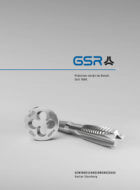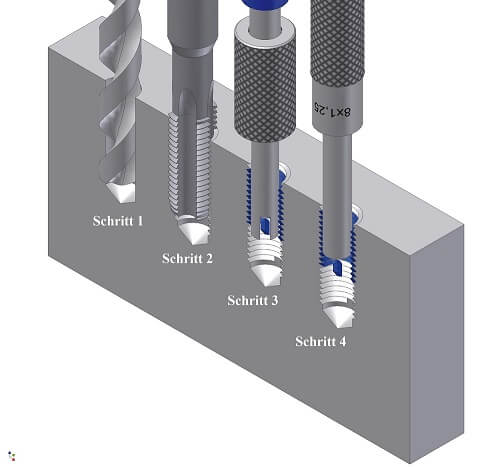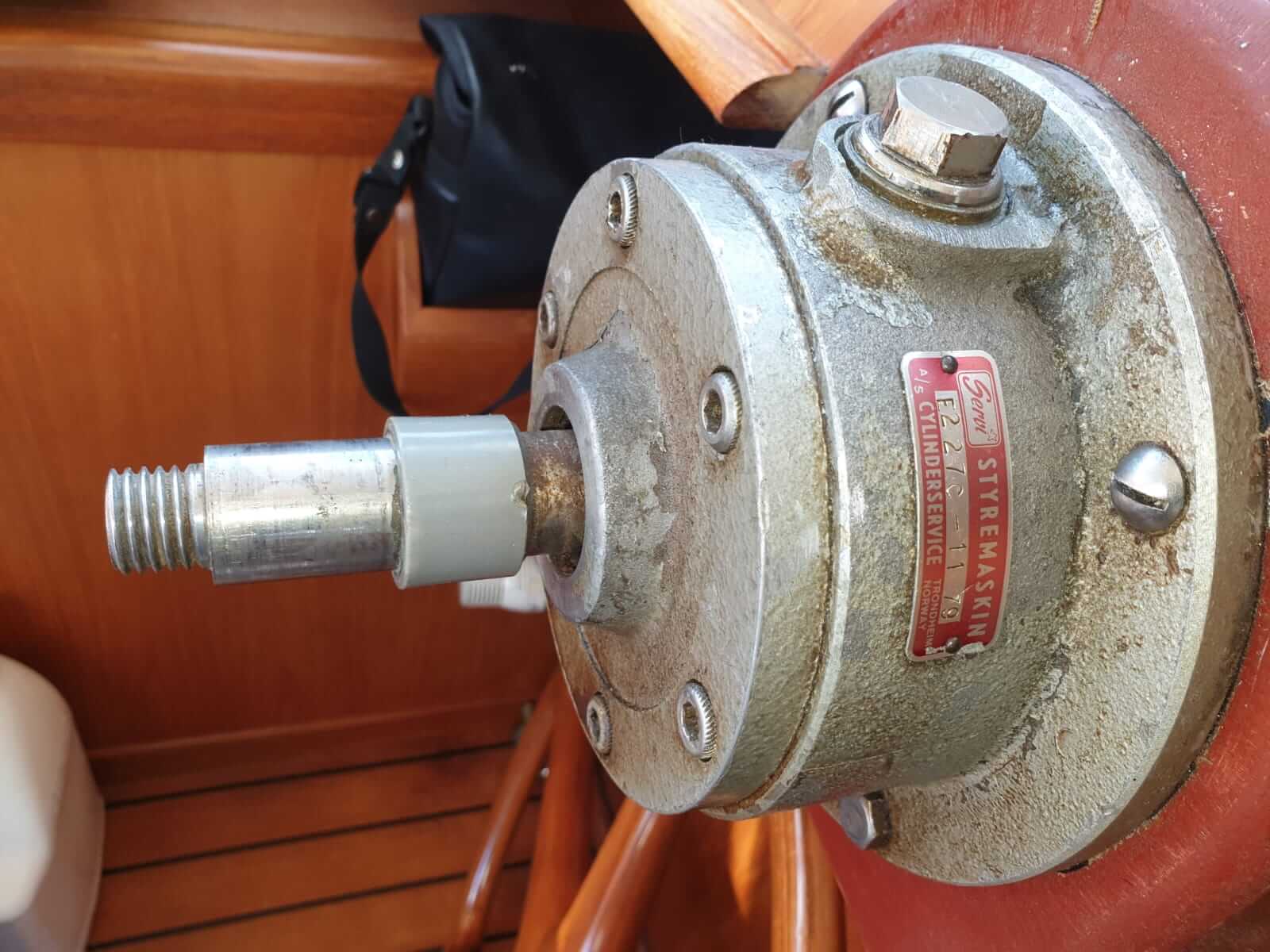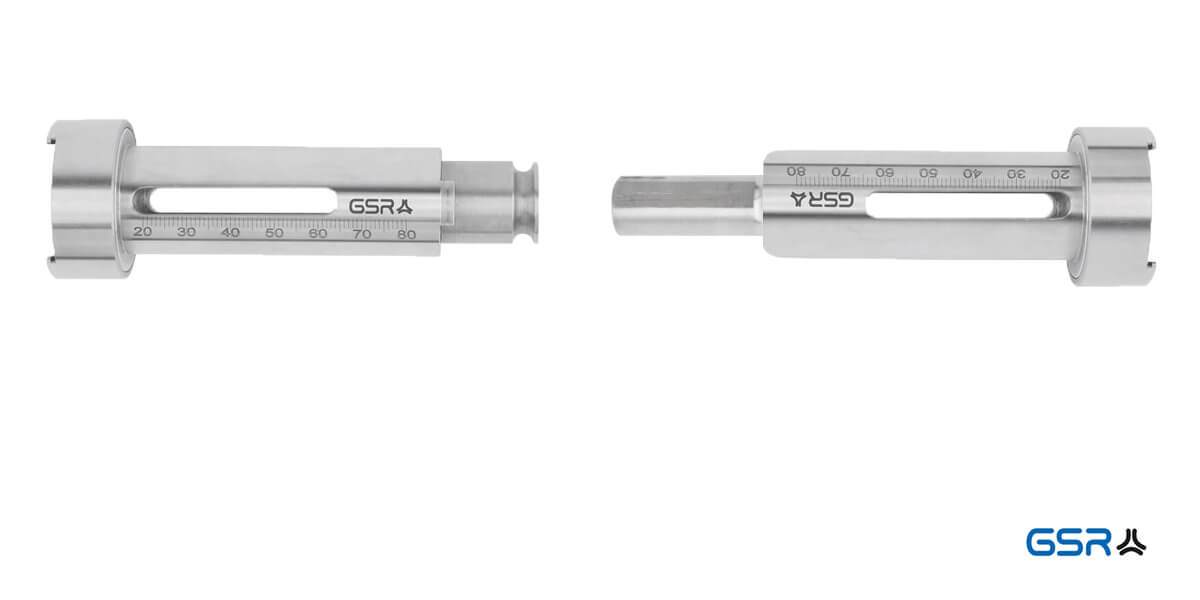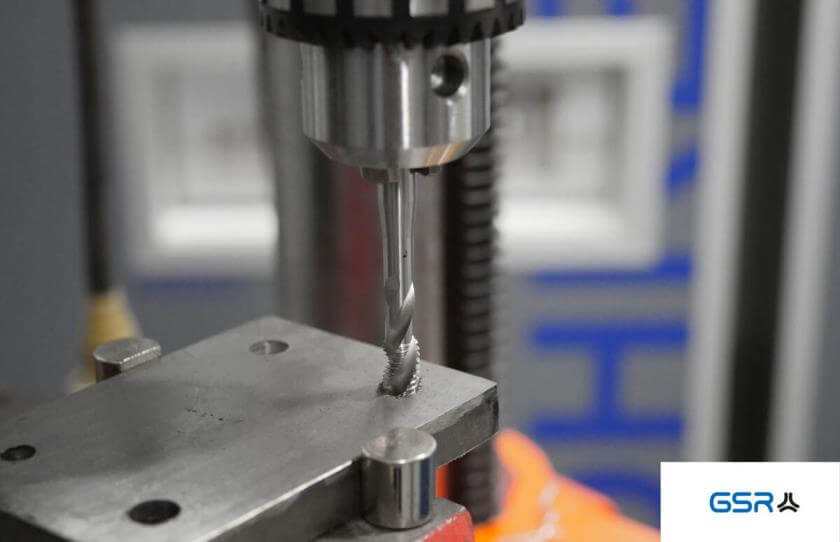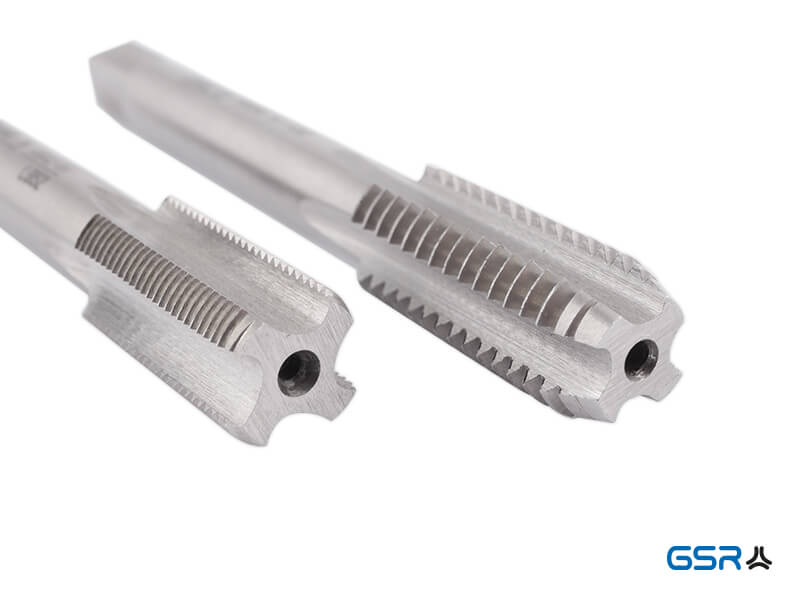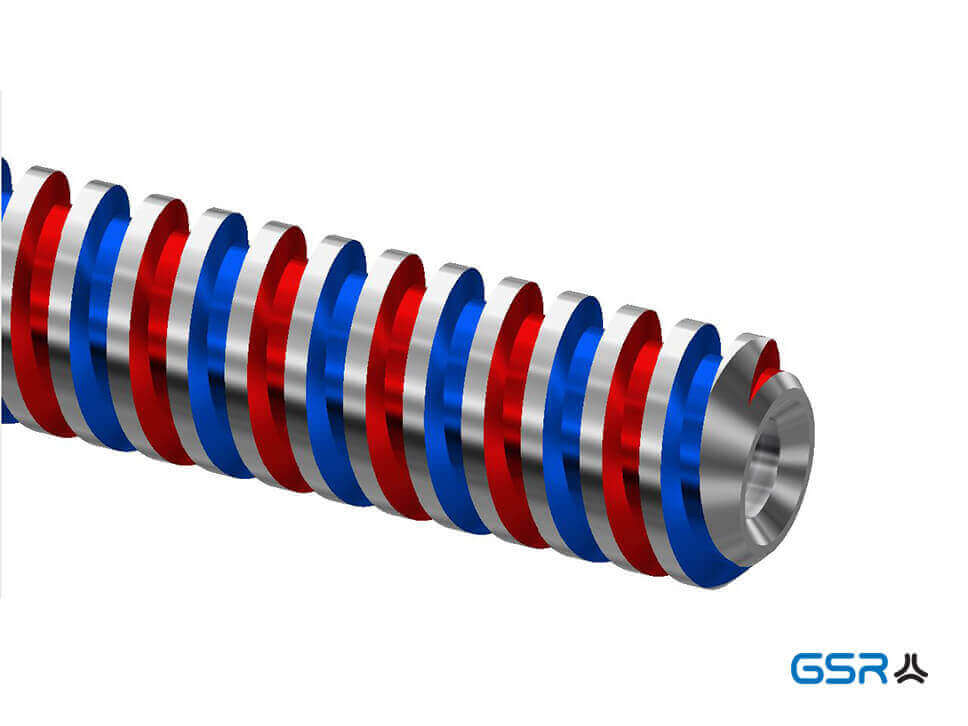5 features for a good tap set
A tapping set usually consists of three-part hand tap sets and a die set. The basic set includes adjustable thread taps and die holders. In addition, such tap sets may also include tool holders, thread gauges, screwdrivers and a set of twist drills (steel drills) with the core hole dimensions. There are five points to consider when making your selection:
- Storage box
- Holding Tools
- Material type
- Compilation
- Possibility to add
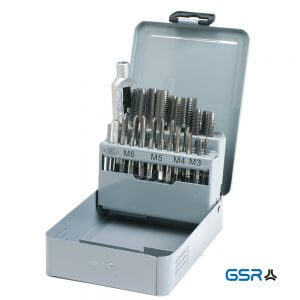
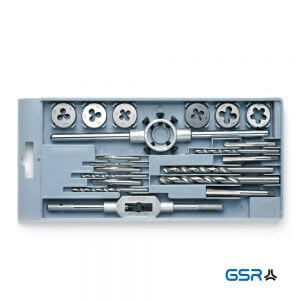
1. storage box for the tap set: metal or plastic
There are basically two storage boxes for tap sets: the metal box is made of moulded, powder-coated sheet steel. These cassettes replaced the classic wooden cassettes. The market penetration was pushed forward by the company Drillbox in the 1970s. Drillbox became a generic term for this form of twist drill sets and tap sets. With the metal cassettes you should pay attention to the stability of the hinges and the handling of the fasteners as well as the thickness of the steel sheets. It is also important that the powder coating is applied cleanly.
The other form are plastic cassettes. There are the most different types and variants. PEDO was one of the first suppliers in Germany. The Solingen company made these assortment boxes popular on the German market in the 1990s.
With the plastic cassettes, you can already see during the visual inspection which quality was used as a basis here. The odour sample is important: If the part smells strong, caution is called for. Pollutants could be emitted. Please also remember that plastic that is too hard breaks easily. Therefore models made of soft plastic are to be preferred. With this type the dilemma is to find the right middle between holding and letting go. Sometimes the tools are hard to get out of the boxes or they don’t hold and fly around loose in the box and then get lost. Relatively new are milled multi-part foam inserts that can be combined with standard metal or plastic boxes.
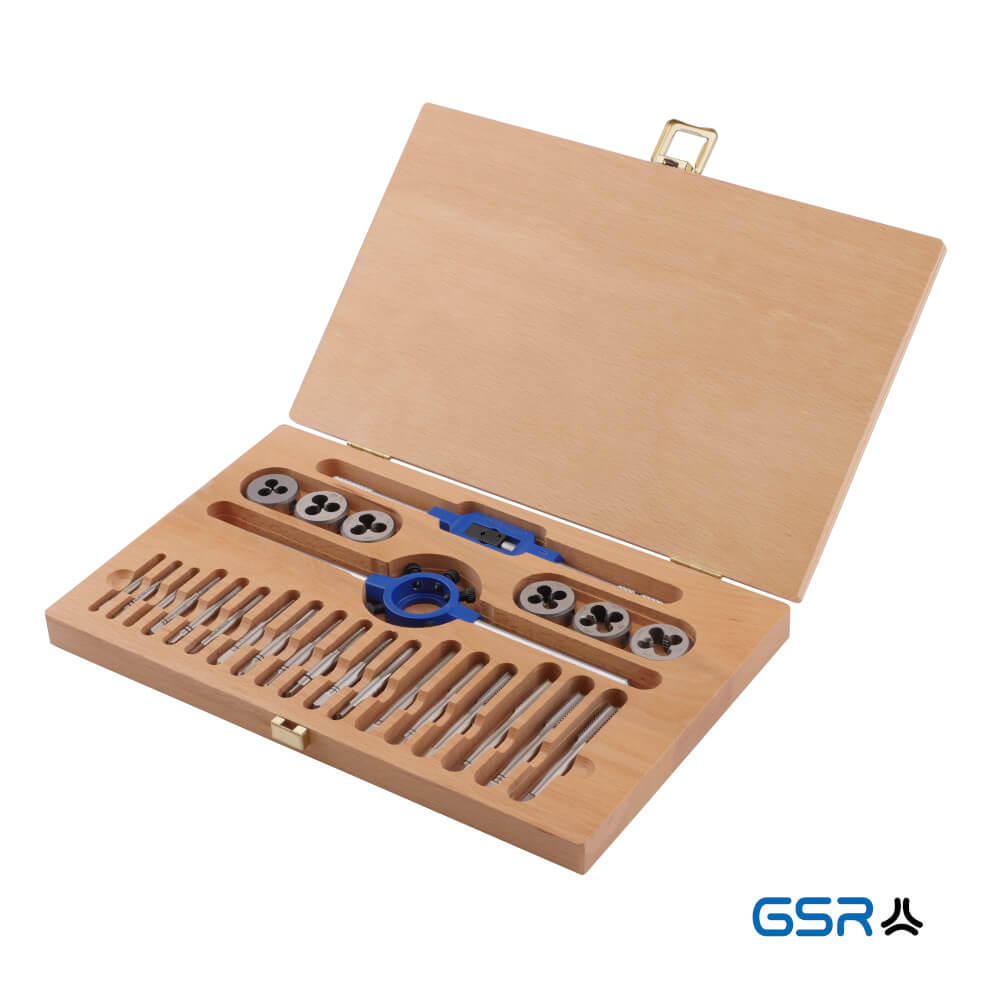
Fans are available for both camps. But neither the metal box nor the plastic versions achieve the elegance of a finely lacquered wooden box milled from solid wood. Unfortunately, these wooden boxes made from renewable resources have disappeared from the range. They are simply too expensive to buy or produce.
2. holding tools: DIN or factory standard?
First take a look at the holding tools: the adjustable tap wrenches and die holders. They give a first impression of the basic quality orientation. If the die holder has only one screw, then you are dealing with a very simple quality for the other tools as well. In this case you have saved two screws, the tool is outside the DIN standard. Then you can assume that everything else is also not in accordance with the standard. If the handles wobble, even if they are tightly screwed, this indicates a lack of care during processing. That is where we advise: Hands off!
In this blog post we will once again deal separately with the quality criteria of retaining joints: Recognize high quality tap wrenches.
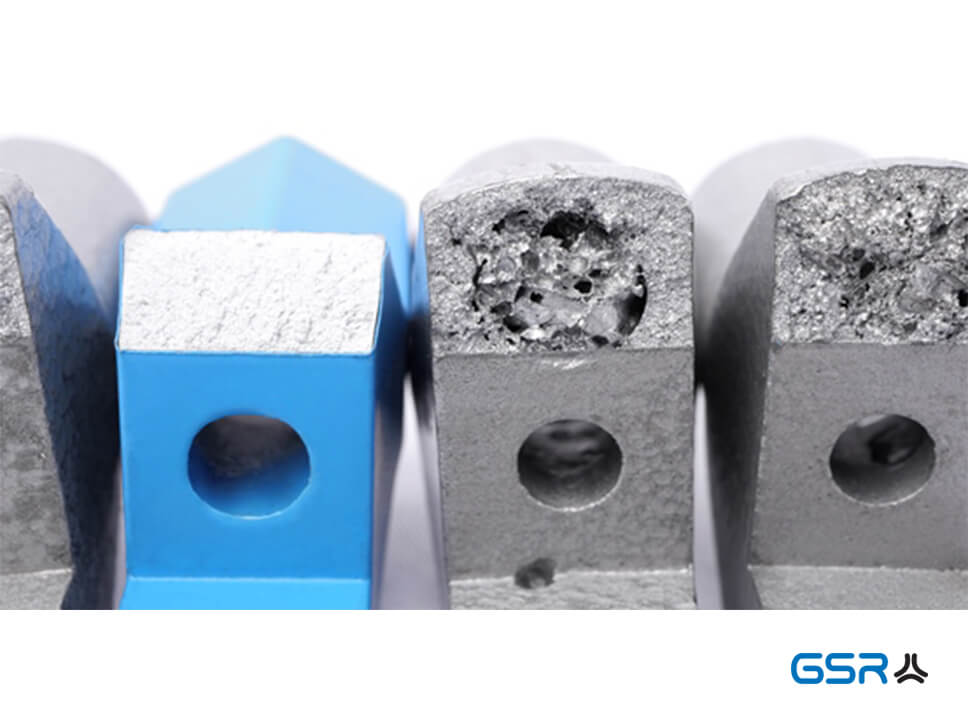
3. material type: HSS or WS?
Another characteristic for basic classification is the material. You cannot see this from the outside. Therefore, you should look at the labeling of the tools. If HSS or HSSG is written on the tools, then it is high performance high-speed steel. If nothing is explicitly written on the tools, then it will be tool steel. For cutting tools, HSS is now the standard, but a properly machined tap made of tool steel (WS) also serves its purpose and is much cheaper.
More about HSS, HSSG, HSSE and HSS-PM can be found here.
4. composition by thread type and thread size: inch or metric?
The most common sizes are taps M 6 and taps M 8. Then with decreasing importance M 4 and M 10, less important M 3 and M 12. This applies to domestic use.
If, for example, you want to live out your passion for repairing agricultural machinery (e.g. tractors), then you should reach a little higher up on the shelf and purchase the sets up to M 20 or even M 24 with the intermediate sizes M 14, M 16 and M 18.
If you are more filigree (model making, jewelry), then the sizes below 3 mm are relevant. The most common set combination here is M 1 – M 2.5. When restoring classic cars, you will not be able to avoid American or English thread types.
Our recommendation: Thread cutting tool set M 3- M 12 as an entry model. For the smaller purse the version with the dies in combination (32 pieces). There you save two die holders and a tap wrench, for the ambitious craftsman then the set with the DIN dies and the HSS metal drills (45 pieces).
Visit our SHop:

5. possibility to buy later
An important point to maintain the functionality of a set is the possibility to buy individual products of the sets if they are damaged or worn out. Of course, this is easier and simpler if the manufacturer of the tap sets is based in Germany or if you purchased the set in a domestic trading company. A listing of the individual parts with corresponding order numbers or a matching QR code would be a cool additional benefit. So far no supplier has thought of this.
Threading sets
A huge selection of tap sets for inch or metric threads and matching twist drills can be found in our store: www.gewindewerkzeuge.com
This might also be of interest to you:
Flutes on threadingtools/ taps
The 13 most important thread types you should know
Thread profiles – Determining variables on the thread
#1 Practical example: 3 steps for thread determination (1/4″ inch)
#2 Practical example: 3 steps for thread determination (M12 Metric)
An overview of the 4 best known pipe thread types ( NPT | NPTF | BSP | BSPT )





